How To Study Anatomy For Character Drawing
Best practice advice for capturing human anatomy
Cartoon the homo body without some cognition of anatomy is like playing a board game without the rule book and some key pieces missing: It's frustrating and confusing. After you learn all the rules and get good at the game, you tin change the rules. But that's considering you understand the dynamics of the game and y'all can change things to improve it.
Being confident with beefcake makes drawing easier and more than fun! In this workshop, I'll give you lot some communication to guide your anatomy studies, so you tin can learn how to describe people accurately, and with conviction.
01. Think first, then draw
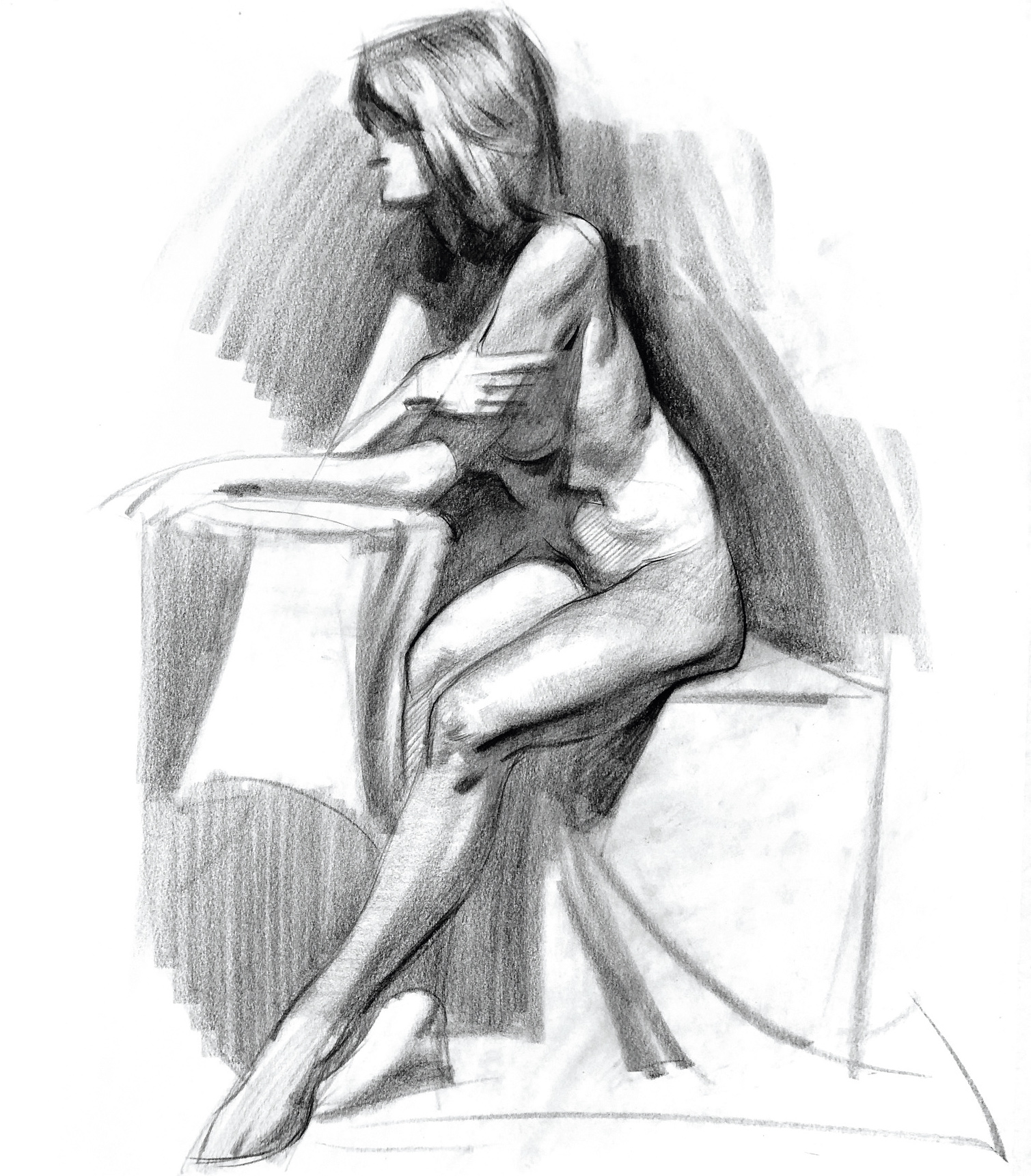
Anatomy is very specific and the divergence between a cartoon that's 'right' and a cartoon that'southward 'incorrect' tin can exist subtle. If your drawings are scribble-similar and y'all don't commit to any one line, your brain is busy just processing the image, and then it won't find anatomical mistakes. If you lot're studying anatomy, you should have a proficient foundation in bones drawing skills already, and you should employ it.
02. Ignore gesture at your peril
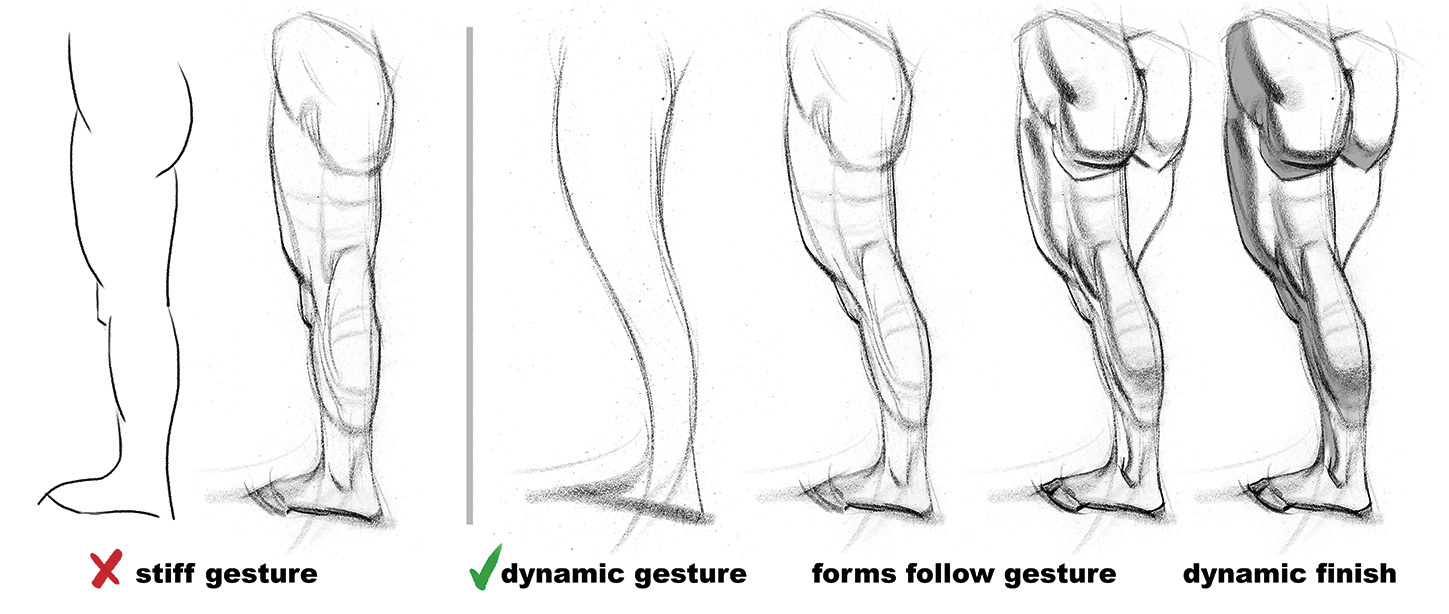
Gesture lies at the center of every effigy drawing. Beefcake should be a new layer, and a new way to express gesture… not a replacement for it. The anatomical forms should exist designed to follow and reveal the gesture.
03. Memorise the simple forms
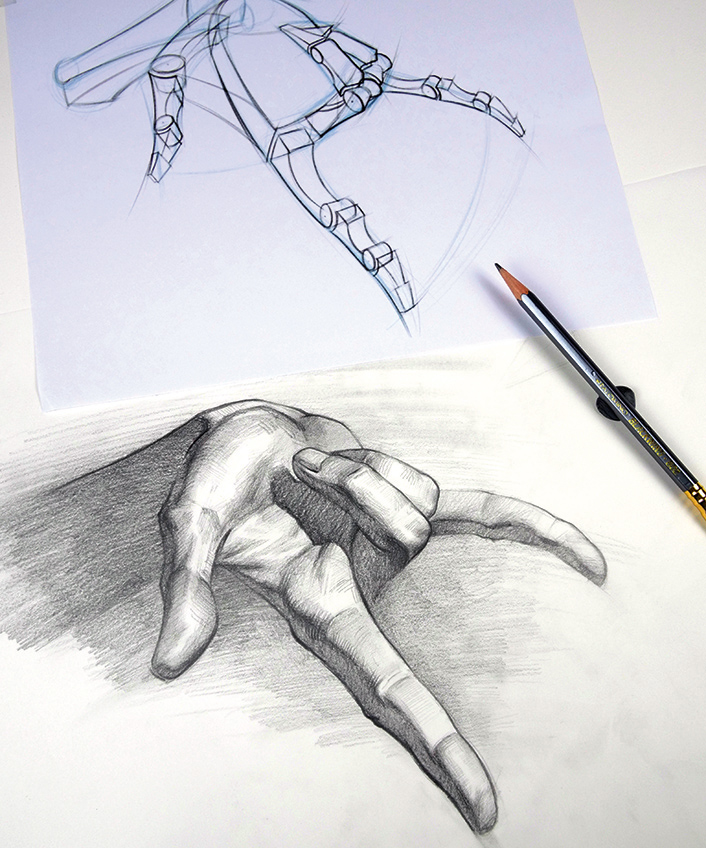
The human torso is organic. It's full of curves, bumps and mushy-looking things. But your drawings shouldn't look mushy. Y'all can try to copy exactly what y'all see, but if the agreement and accuracy isn't there, then information technology will show.
A better arroyo is to learn to break down the torso into simple forms. This is why I teach the simple grade for all areas of the body. Simple forms are uncomplicated enough that yous tin actually memorise them, and pull them out of your pocket whenever yous need to.
04. Pay attention to the skeleton
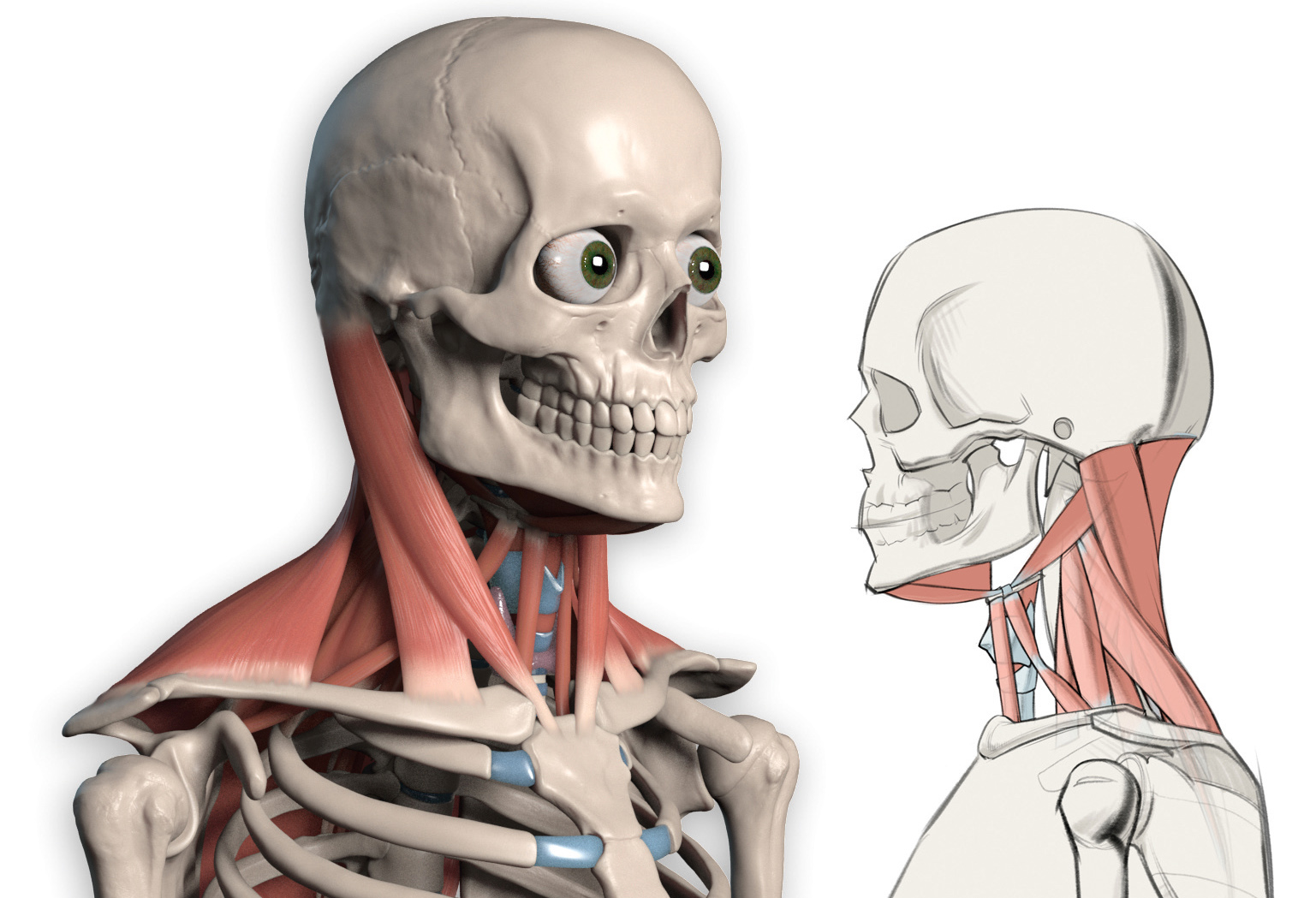
It's easy to tell when an artist doesn't know the skeleton, even if you're just looking at their fully fleshed figures. The muscles won't aim to the right identify. The skeleton is complicated, merely at that place's much less variation in the forms of the skeleton than the forms of the muscles and body fat. Knowing the skeleton makes it easier to construct the body, sympathise how it works, and put the muscles on top of it correctly. Accept the fourth dimension to learn it and your drawings will benefit for the rest of your career.
05. Review and correct
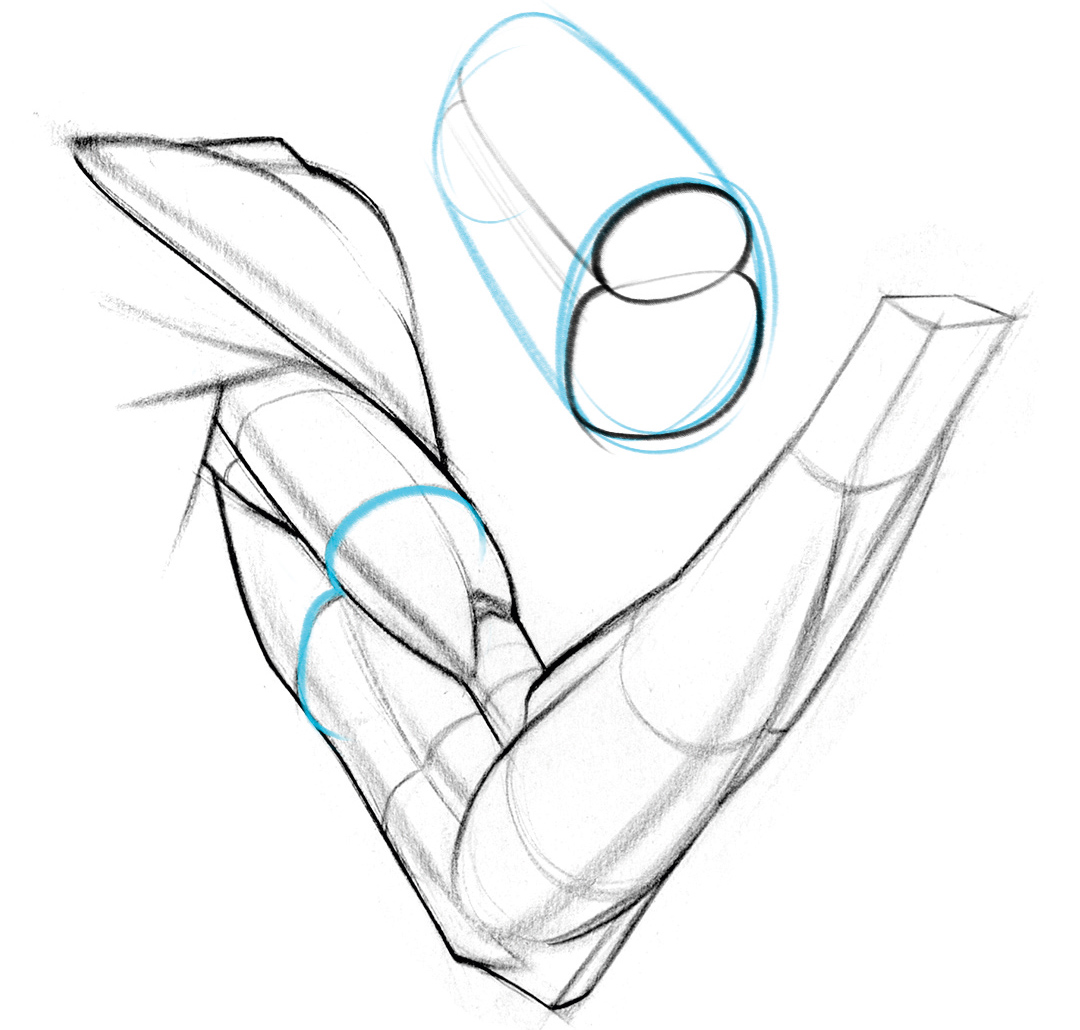
After you stop a drawing, take a critical look at it to meet where you can ameliorate. You can inquire a friend, mentor or online community for help. So, really follow through on what you notice, and make corrections to your drawings. It's not plenty for your eyes to see what went wrong – your hands have to fix it. You can do this to yesterday'due south homework, or fifty-fifty drawings you made months or years ago.
06. Don't just read nearly it
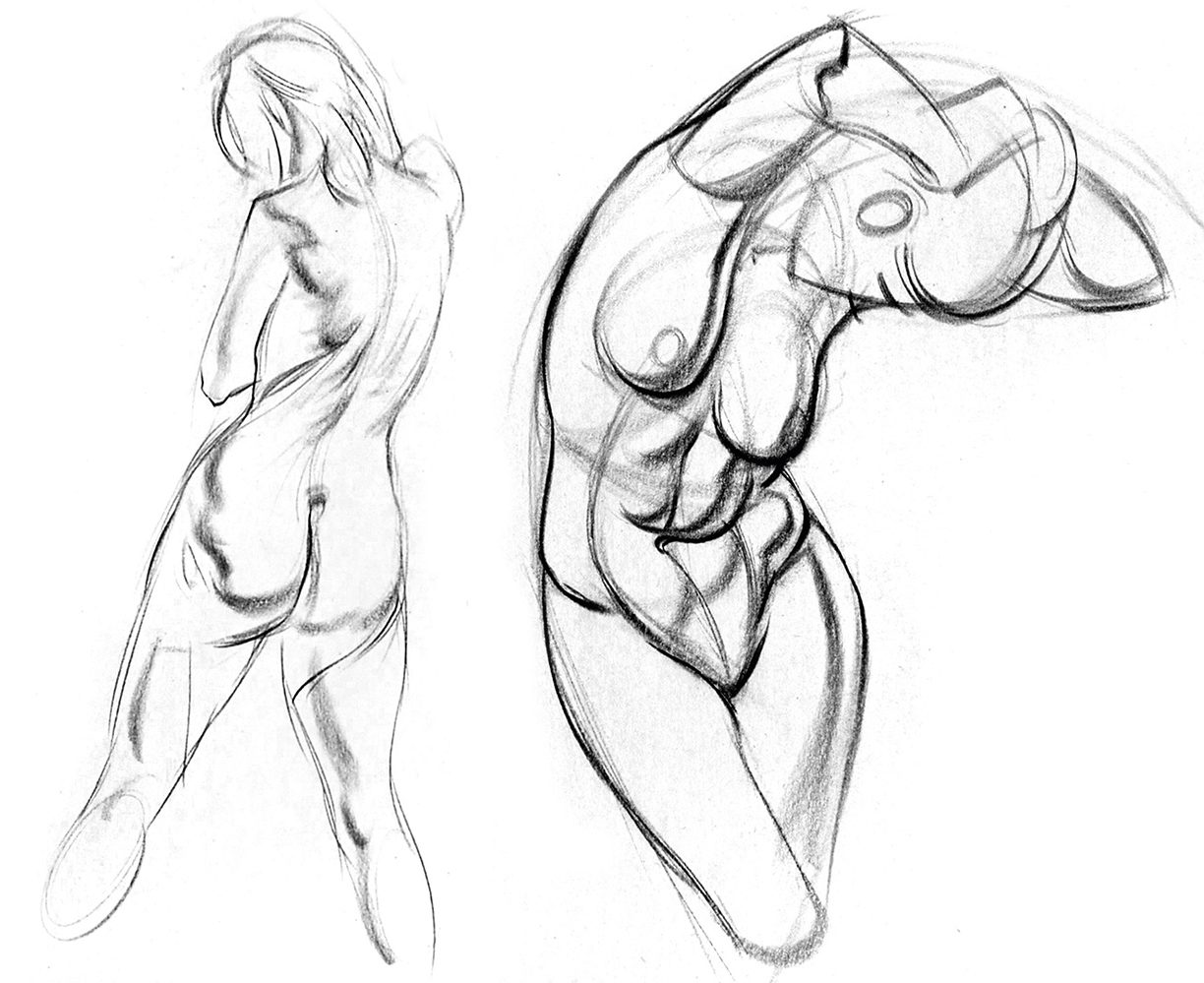
Reading or listening to an explanation of beefcake may be enough for you lot to intellectually sympathise information technology, but that doesn't mean y'all can draw it. We're artists. Nosotros accept a bigger job to exercise than just empathize anatomy. Y'all have to learn to depict it so information technology's believable and interesting. And the only style to do that is to draw. Draw a lot!
07. Steer clear of snowmen
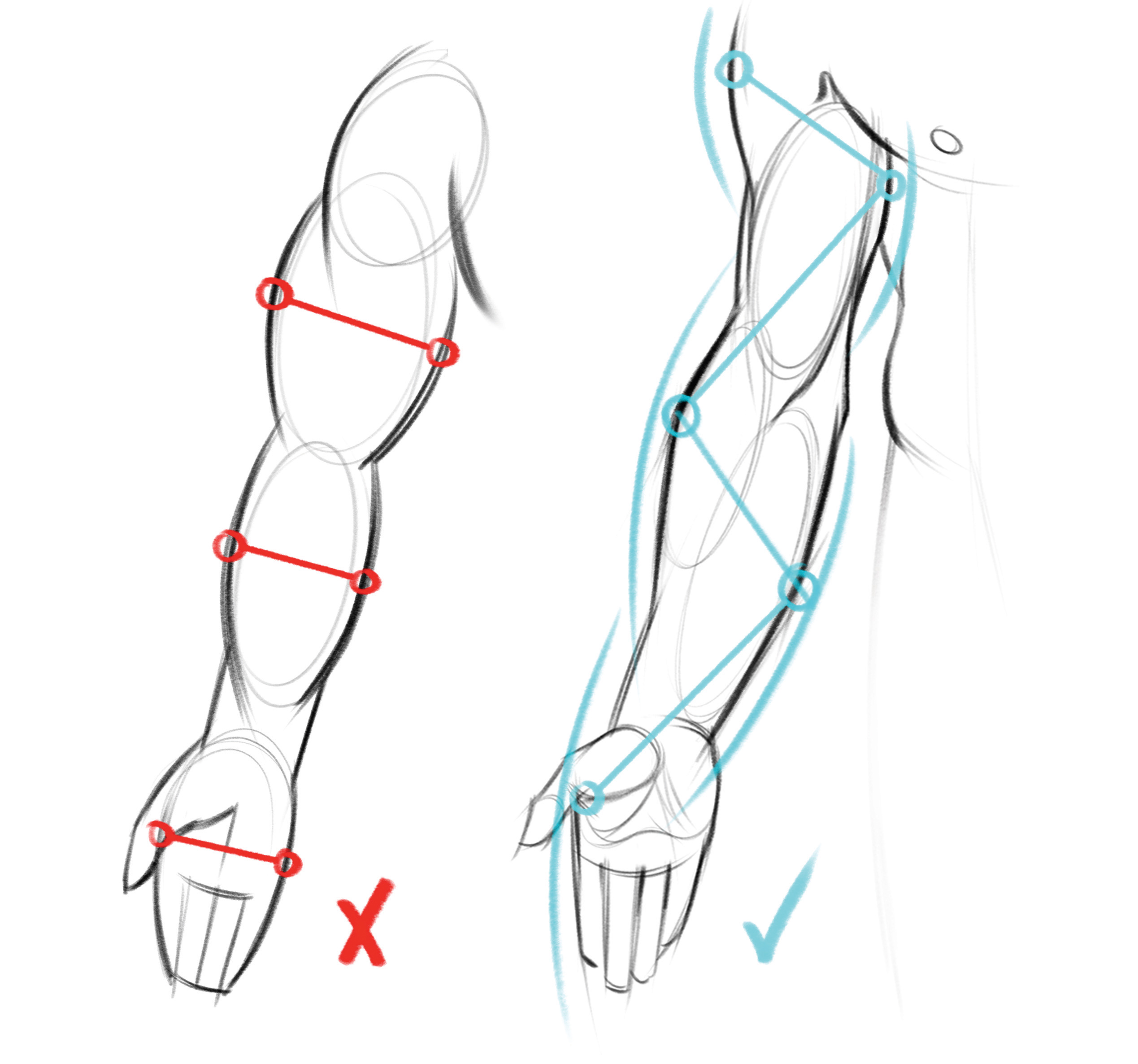
Don't depict symmetrical bulges everywhere. That makes your drawing look stiff and boring. The contours tend to zigzag down the body, creating a dynamic catamenia. Furthermore, muscles unremarkably piece of work in pairs: when one side flexes the other is resting.
08. Don't include every item
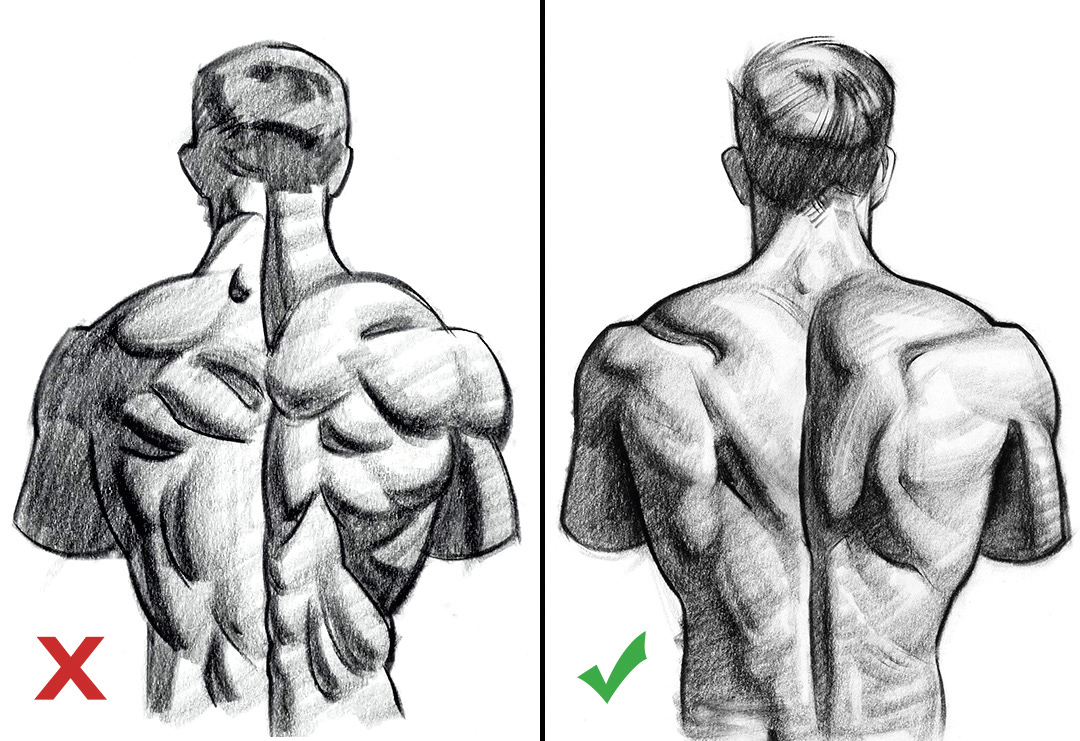
Remember: non every os, tendon and muscle has to be accented in every drawing. Indeed, anatomical details in the incorrect spots tin can make a drawing look stiff and fake. Pick and choose details that support the overall picture, and let those be enough. In general, you'll probably cull details that are at or near the focal point, and that catamenia with the gesture or composition.
09. Be patient
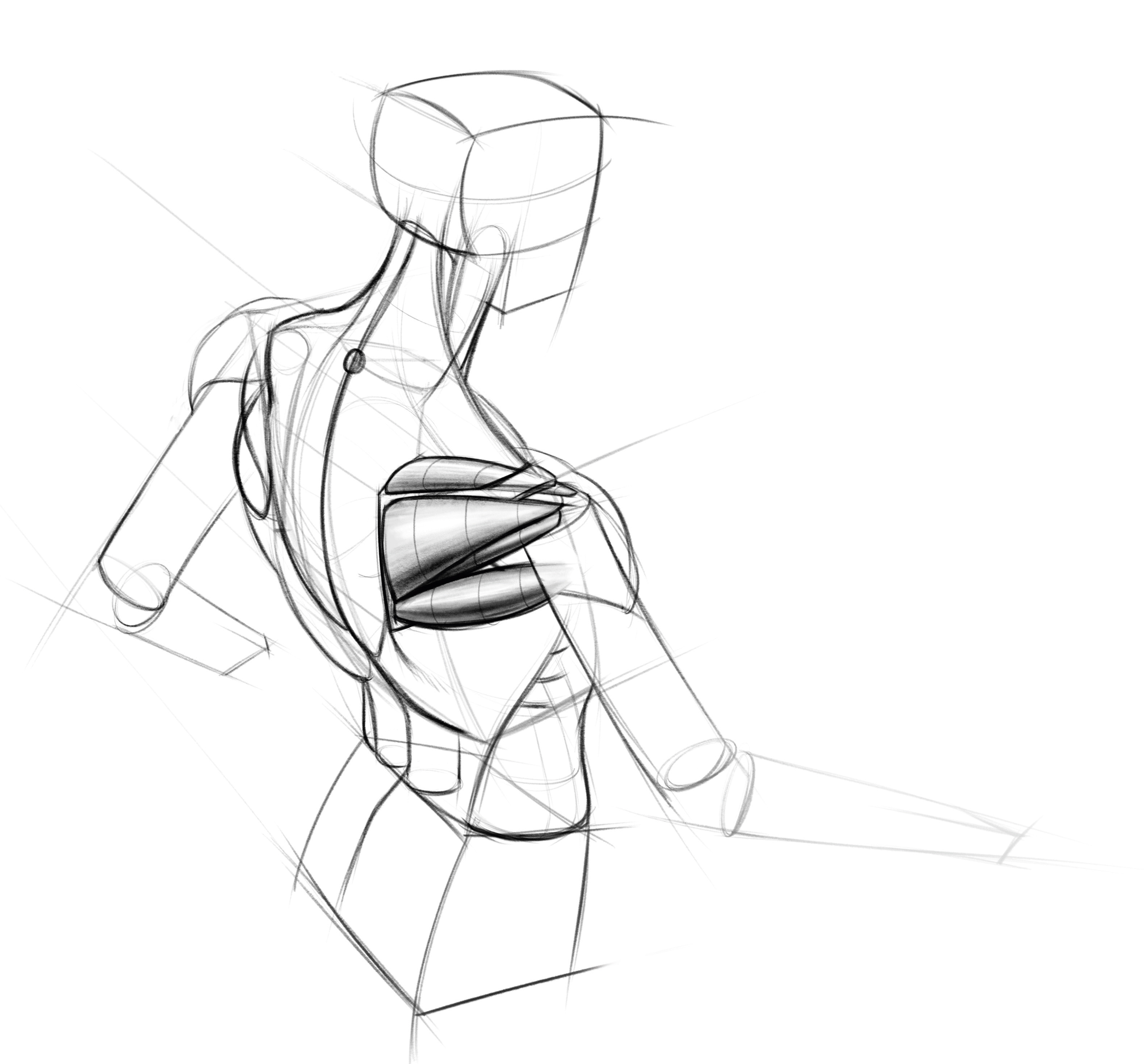
Learning anatomy is a tiresome process. Accept your fourth dimension on every drawing and with every area of the body. You tin can't learn everything in your first pass. You lot'll have to come dorsum to review and add to your understand of all the parts every few years for the rest of your career. Don't expect to exist a master immediately. Never stop learning.
ten. Be goal-oriented in your practice
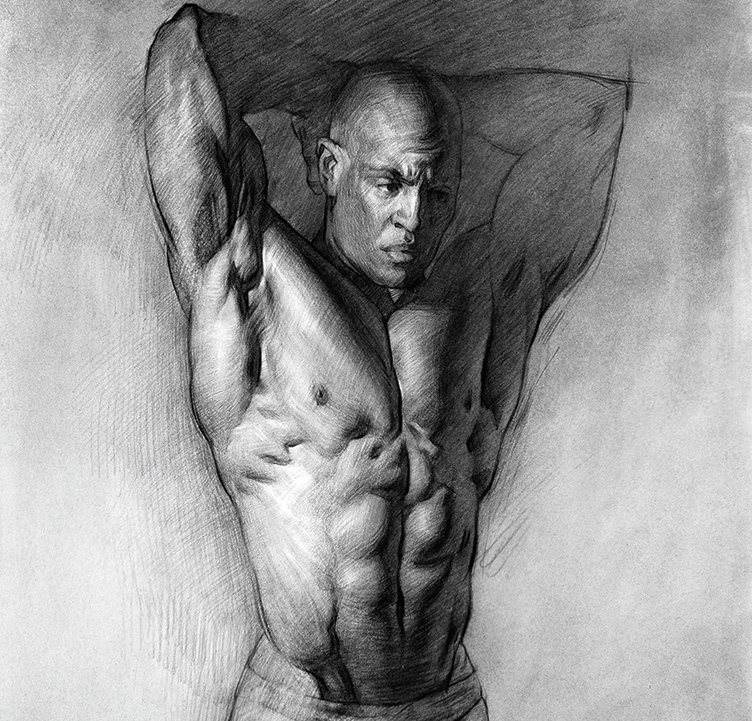
There's a lot to anatomy to study and lots of aspects of it to report. For instance, if you're practising gesture, the beefcake needs context. Make the forms work with the pose and focus on making the anatomy dynamic. If you're studying form, apply cross profile lines and shading to add together dimension. Focus on constructing the body parts using uncomplicated forms and avoid organic forms you don't sympathise. Choice a goal and focus on it. Make sure yous're getting the well-nigh out of your practice time.
11. Try different exercises
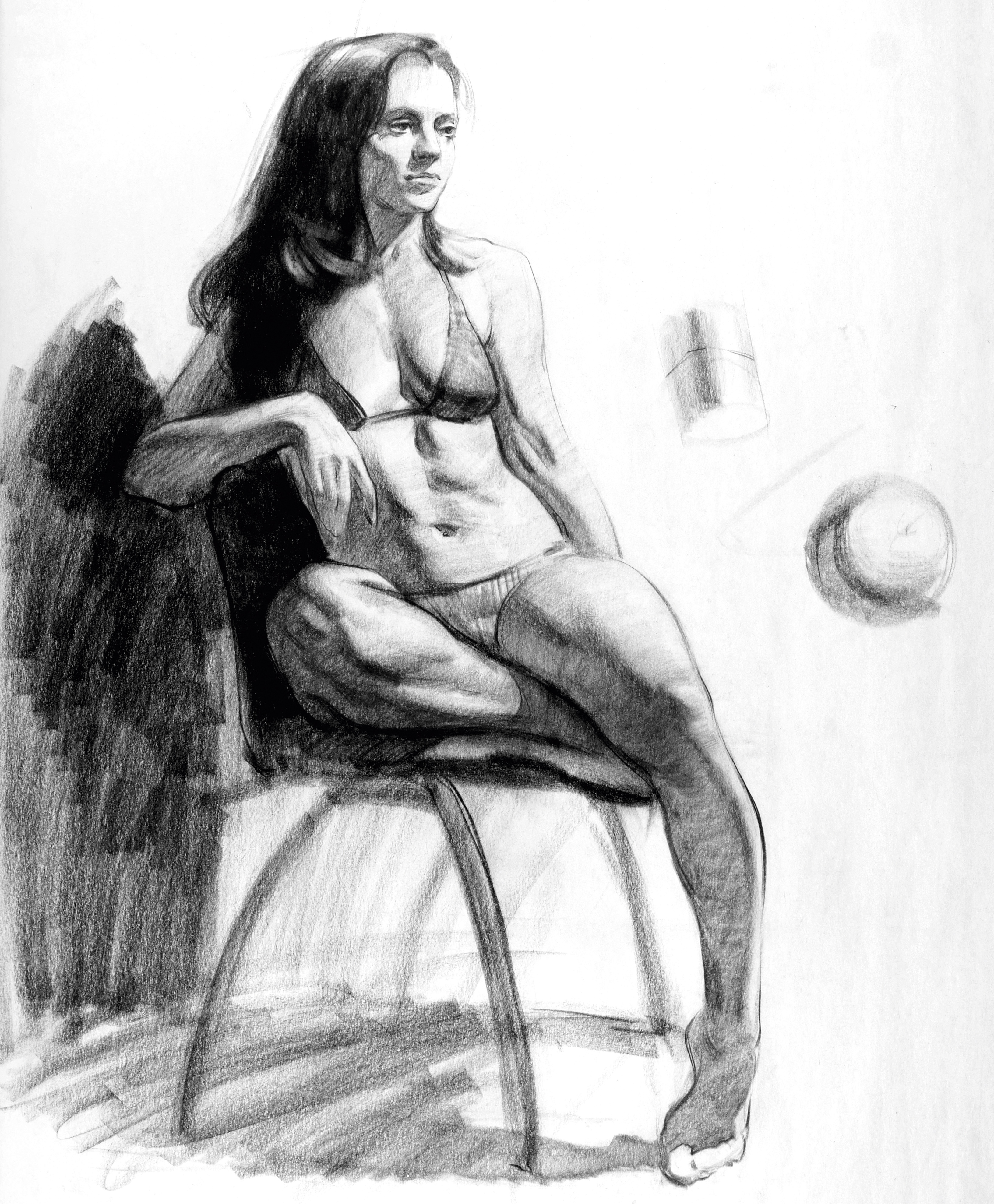
Beefcake tracings, drawing from life, drawing from photos, drawing from your imagination, cartoon from other drawings (master copies), sculpture… Not merely is this fun, but information technology helps your brain process information in unlike ways, and fills in gaps in your knowledge.
12. Get to grips with the language
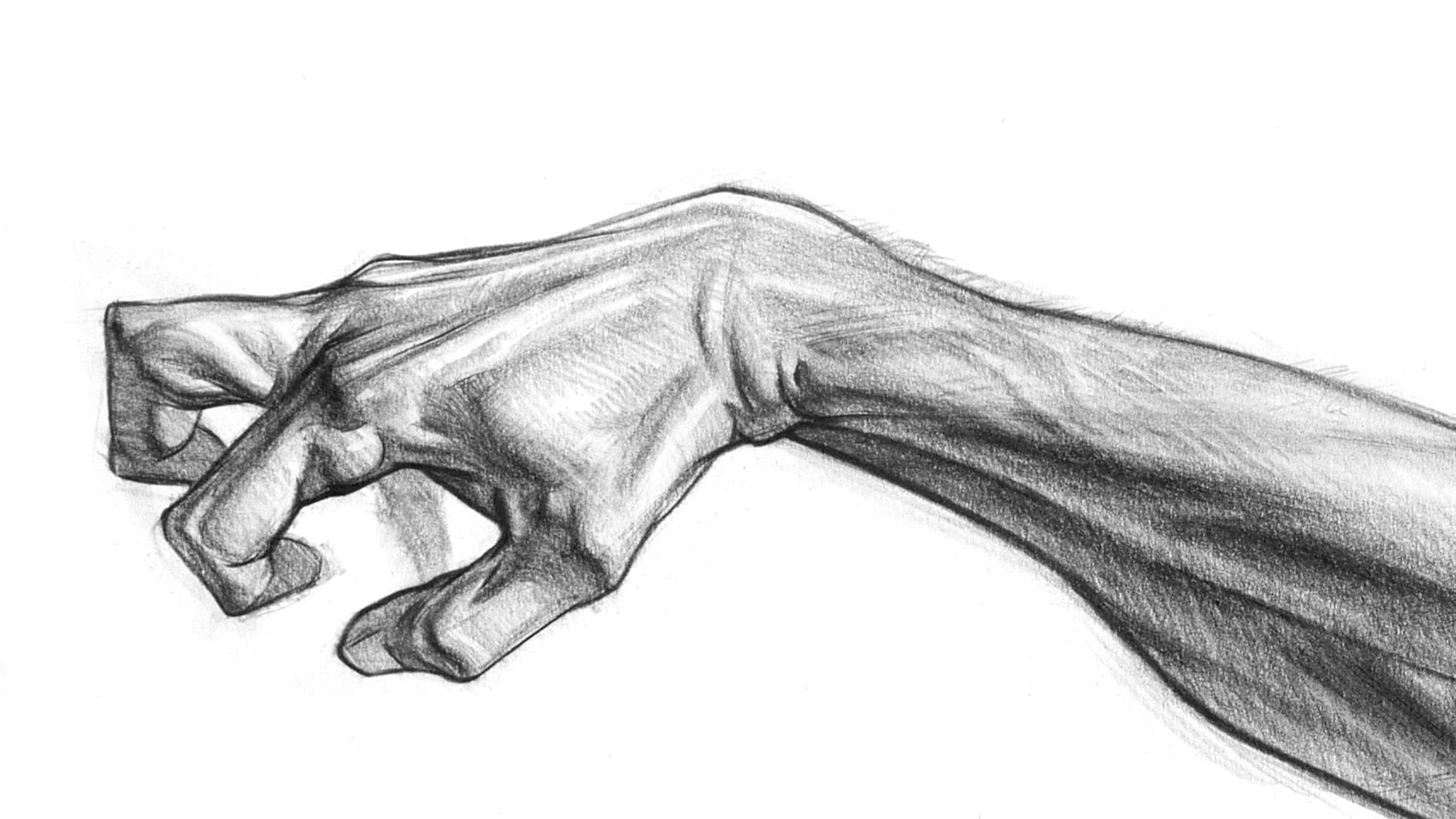
In that location'south lots of memorisation with beefcake, and it can exist overwhelming if you're hearing all these terms for the offset time. Terms like medial and lateral, abduction and adduction, origin and insertion, subcutaneous and so on. Consider making flashcards or other old-school study methods to help memorise the majority of the terminology babble.
When you can speak almost anatomy fluently, you lot tin can think about anatomy fluently, which means you're going to have an easier time when you lot're cartoon. This is the least important role of anatomy for artists, but it sure is helpful. You'll feel a lot better when you know the terms. And of course, you'll leave your fellow spellers in the dust on Scrabble nights!
This article was originally published in ImagineFX, the world's best-selling mag for digital artists. Subscribe now .
Read more:
- How to draw hands
- Create more interesting skin tones with acrylics
- Art techniques: summit tutorials for painting and drawing
Related manufactures
Source: https://www.creativebloq.com/advice/best-practice-advice-for-capturing-human-anatomy
Posted by: andersonbarives.blogspot.com


0 Response to "How To Study Anatomy For Character Drawing"
Post a Comment